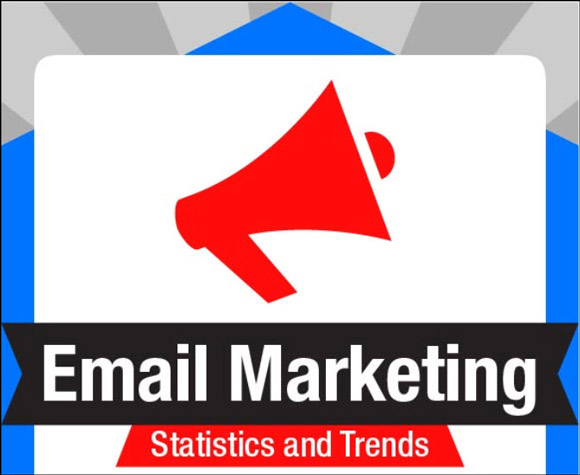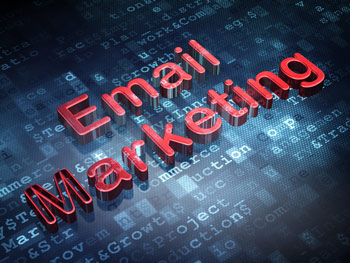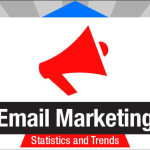
There is a lot of media coverage surrounding the use of social media for online marketing purposes. Liking, sharing, and the potential for going viral are all definitely attractive. Email marketing, on the other hand, is nothing new and it’s definitely not sexy. However, email is a marketing workhorse with a proven track record of success when used appropriately.
I recently came across an infographic that touched on a number of very interesting email marketing opportunities, statistics and trends that anyone doing marketing for small business would find useful. Here are some of the high points of included in the infographic in text form. The actual infographic is located further down in this post.
Email marketing statistics show that when it comes to strategies focused on acquiring new customers, emails are a whopping 40 times more effective than social media efforts on sites like Facebook and Twitter. Considering that the number of email accounts worldwide is projected to grow to over 5.2 billion by the end of 2018 (from an estimated 4.1 billion in 2014), businesses and marketing firms alike should take note.
Email accounts offer a direct marketing opportunity that continues to pay off, despite the growth of social media and other avenues of exploration.
Consumers Prefer Email
It is a common misconception that promotional emails are summarily dismissed and deleted by consumers. In fact, an incredible 70% of customers receiving marketing materials by email admit to opening messages from a company or a recognized brand to see if coupons, discounts, or other deals are enclosed. Email marketing may be even more effective when personalized subject lines are used.
According to email marketing statistics, open rates for mail containing industry-specific subject lines are as follows:
• Travel: 65%
• Multi-channel Retailers: 37%
• Catalogers: 34%
• Business Products and Services: 27%
• Media Entertainment: 15%
• Consumer Products and Services: 6%
• Publishers: 1%
With this targeted strategy, even lower overall open rates could yield better overall results, thanks to higher unique open rates and click-through. When promotional mailings are personalized, there is a 29% bump in unique open rates and click-through rates jump by 41%. Further, 81% of consumers surveyed agreed that they were more likely to make online or in-store purchases because of targeted emails.
Social media cannot compare. Businesses see six times more click-through with email campaigns than they do with tweets. The onward march of technology yields new platforms for businesses to interact with consumers all the time, but email marketing opportunities continue to prove the efficacy of the medium.
Marketers Prefer Email

Perhaps this has something to do with the fact that consumers consistently show a preference for email marketing efforts. When polled, 69.7% of adults stated that they prefer to interact with companies via email, as opposed to social media methods. The proof is in the pudding: when held up against social media and other direct marketing efforts, email enjoys the highest conversion rate at 66%.
Types of Email
Currently, 1.47 million emails per month are sent out by U.S. companies, and of those emails, 59% are related to marketing. Still, email marketing statistics show that the majority of consumers receive fewer than 5 marketing emails each day. The breakdown is as follows:
• 46% receive fewer than 5 promotional emails per day
• 25% receive 6-10
• 9% receive 11-15
• 6% receive 16-20
• 14% receive more than 20 promotional emails each day
What does this mean for businesses and marketers interested in increasing conversions through email marketing efforts? There may not be a lot of competition, for one thing. In addition, increasing spending to focus on personalized, direct email marketing efforts will likely put marketers ahead of competitors fixated on social media efforts.
Mobile Usage
Lest businesses assume that the growing mobile market will be lost to social media marketing, the fact that so many people now use mobile devices for email bears consideration. According to email marketing statistics, mobile email clicks have increased 10% in the last year and now account for 40% of all email click-through. What will 2015 email marketing statistics show? In addition, the revenue averages resulting from click-through rates on mobile email are more than double the average revenue earned via desktop email click-through.
Perhaps this is because mobile users are on the go and have limited time to make purchasing decisions. Maybe mobile purchases don’t seem as “real” as purchases made via home computer. What matters is that email marketing strategies deliver consistently superior results, and businesses and marketers alike should not make the mistake of dismissing email marketing as a viable source of lead and revenue generation. Just because social media is new and sexy doesn’t mean it will hold up against the tried and true results that email marketing continues to produce.
The Email Marketing Opportunities, Statistics and Trends Infographic:
Infographic by- Invesp
Email Marketing – Conclusions:
The online marketing world continues to evolve at a rapid rate. New platforms, including social media will come and go, and technology will continue to advance quickly. Through it all the benefits of an effective email marketing program will continue to bear fruit for businesses small and large.
The benefits of a channel like email marketing that allows direct contact with customers, sales prospects, vendors and partners should definitely not be ignored by any business.

